Warther Museum
Incredible vision, an immaculate eye for detail and great patience: Those are the attributes of Ernest “Mooney” Warther, master carver. Warther Museum, located at 331 Karl Avenue in Dover, is dedicated to the genius and perfection of Warther’s impeccable, unmatched carvings.
With guided tours taking guests throughout the displays of Warther’s priceless works of art, visitors can gain insight into how these awe-inspiring carvings were made. In addition, they will learn about the life of the many who brought these carving to life with his immense talent.
While Warther’s exquisite carvings are the big draw, there are many other fascinating avenues to explore at Warther Museum. The button house, featuring more than 73,000 buttons that were collected and mounted by Warther’s wife, Freida, the incredible gift shop and the lush, radiant gardens are sure to lift your spirits.
Warther Museum is the perfect destination for individuals, families or groups. Countless generations have toured the museum, exploring Warther’s detailed, mesmerizing carvings, which have been appraised as priceless works of art by the Smithsonian Institute.
Family-owned and operated, the museum is currently under the direction of Warther’s grand-daughter, Carol Warther-Moreland. Open seven days a week, Warther Musuem makes for the perfect destination on any tour of Ohio’s Amish Country.
Hours of operation are daily from 9 a.m. to 5 p.m., with the final tour of each day beginning at 3:45 p.m.

Events and Articles from Warther Museum
Chuggin' along.
Mooney Warther’s passion for carving is the engine that drives steam evolution.
Warther Museum is one of the few museums in the world that captures the depth and sincerity of an artist while simultaneously bringing to life not just the intricate works in the collection but also the spirit of the artist Ernest Warther, himself. A must-see destination while visiting Ohio’s Amish Country!
More Things to Do in Amish Country
Medina county visitor's bureau.
Year-round family fun and a picturesque, old-town atmosphere await visitors in Medina County. A variety of museums and festivals celebrate the county's rich history in agriculture and industry.
Muskingum Watershed Conservancy District
The Muskingum Watershed Conservancy District (MWCD) offers outdoor recreation opportunities including camping, cabin rentals, boating, boat rentals, fishing, hiking and hunting on more than 54,000...
Mohican-Loudonville Visitors Bureau
The Mohican-Loudonville Visitors Bureau puts the camp and canoe capital of Ohio on the map by promoting the best of Mohican-Loudonville. It’s the first stop for anyone looking for the best...
Ohio's Amish Country Magazine
Plan your visit to Ohio’s Amish Country, home of the world’s largest Amish/Mennonite settlement.

Click Here for FREE Subscription

Warther Museum & Gardens

Admission to the Ernest Warther Museum and Gardens in Dover, Ohio, is approx. $20/person (less for students and seniors).
- Open: March through December. Guided tours are offered Thursday – Saturday, at 10am, 12 pm, and 2pm. Self-guided tours are available most days from 9am – 4:30pm.
- Location: ( Map It ) 331 Karl Ave. in Dover, Ohio
- Phone: 330-505-6003
- Web: click here
The Ernest Warther Museum and Gardens: This world-class facility is a fitting tribute to Ernest “Mooney” Warther, the World’s Master Carver. Warther created a collection of steam locomotives carved of ebony and ivory appraised as priceless by the Smithsonian Institution. The carvings are displayed in a beautiful Swiss chalet with a new theater handcrafted solid curly maple. You will also experience new displays and the expanded knifemaking & woodshop. Freida Warther’s Button House is still a sight to see, and the Swiss gardens are magnificent in the summer.
The original Warther Carving Museum opened three generations ago and has blossomed into an attraction that draws visitors worldwide. The amazing Warther story is presented by knowledgeable guides and enhanced by films that include family photos and movies of Mooney carving in his shop. Some of the new displays show his traveling years, his love of reading, and commando knives made during World War II.
Dave Warther, Mooney’s son or grandson Mark, is usually in the lobby greeting visitors and carving souvenir wooden pliers for children. Mooney made the pliers famous by placing 10 interconnecting cuts into a wood block. Another grandson, Dale, makes handcrafted kitchen knives. You can observe the cutlery and knife blocks being created from the knife shop viewing area. The Warther gift shop is operated by Dave’s wife, Joanne, and his daughter Carol. It is the exclusive home of Warther Cutlery.
Excerpt from a past edition of OhioTraveler

When a guy is named Mooney, you expect something out of the ordinary. Mooney Warther would not have been a disappointment. He was witty, funny, gifted, eccentric, ambitious, and entrepreneurial—genius would not adequately describe his stature.
Ernest “Mooney” Warther was a woodcarver extraordinaire. Terms such as “world’s greatest” or “world’s best” are often used as fictitious hype, but when applied to Mooney’s aptitude with a knife, they are not an exaggeration.
Hearing such exalted claims to believe such talent is found only in some strange faraway venue is a quirk of human nature. In truth, one of the most skilled artists in history was born, grew up, and plied his trade—largely unnoticed—in our back yard: Dover, Ohio.
His father died when Mooney was three, and he acquired only a second-grade education that took him four years to complete. Mooney didn’t have much time for school—he was working. His cattle herding for a penny a day was the source of his name—an adulterated version of “moonay” from his Swiss heritage that means bull of the herd.
On one of his herding excursions in 1890 at the age of five, he found a pocketknife and began carving. Mooney said it was a hobo who taught him to cut a pair of pliers from a solid block of wood. It was a procedure he perfected and claimed as his signature. It is estimated that Mooney made and gave away 750,000 of the little wooden devices in his career.
By age fourteen, he worked in a steel mill but continually carved models of steam locomotives that had enthralled him since early childhood. At one point, however, he found time to carve a working model of the mill, including an animated figure of his old friend who liked to hide behind a furnace and steal a nip from his flask.
Mooney carved hardwoods like walnut and ebony and was dissatisfied with store-bought knives that wouldn’t hold an edge. No doubt, aided by his experience at the mill, Mooney researched different types of steel and techniques of tempering and sharpening. He first made a kitchen knife for his mother. It was so good that word spread rapidly, and by 1923 Mooney left the mill and began making knives as a business.
It was the same year that the New York Central Railroad discovered his locomotive carvings. He was offered fifty thousand dollars, plus five thousand per year to stay with the display. Henry Ford made an even more generous offer, but Mooney declined both. “My roof doesn’t leak, I’m not hungry, and my wife has all her buttons,” he said. (His wife was a collector of buttons, which are displayed along with Mooney’s carvings.)
While Mooney designed his carving knives, he decided to see how far he could go with his pliers-making expertise. He started with a large block and hewed one pair after another—all connected until he had a “tree” of pliers—511 that could be folded back, recreating the block from which they were fashioned. It was an exercise in mental dexterity as well as carving skills. Engineering professors from what was then the Case Institute of Technology in Cleveland studied the sculpture and proclaimed it was impossible to have been produced in one piece. Yet undeniably, there it was.
As a young boy, I received one of Mooney’s pliers. His bushy snow-white curls bounced as he talked non-stop in his high-pitched gravelly voice. He held a four-inch rectangular piece of wood in one hand and, with the other, made a series of quick strokes with a short-bladed knife. He opened it in about five seconds, revealing handles hinged to jaws just like a pair of pliers. My eyes bulged in wonder as he handed it to me, the youngest in the family of viewers.
But the pliers rate only as a parlor trick compared with his train carvings. They’re done in exact scale and authentic in minute detail. Some of them have as many as 7,500 parts: pipes, rivets, screws, connecting rods, perfectly round wheels—each created on a simple bench with a vise and Mooney’s carving knives. Many are equipped with electric motors that turn all the moving parts, held by bearings he made from a Brazilian “oily” wood that never needs lubrication. As well as wood, he used ivory for some almost microscopic pieces. Because of his love for elephants, his ivory carvings were mostly from old billiard balls. Engineers have poured over his models with precision instruments and measuring devices, drawing the same conclusions as most nonprofessional observers: The replicas are so exact that they couldn’t have been carved by hand. But they were.
By the time railroads began phasing out steam engines; Mooney had carved 54 exact-scale counterparts of his favorite iron horses, but swore as long as he lived, he’d never carve a diesel locomotive.
Instead, he began a series of “Great Events in American Railroad History.” He created a solid ivory rendition of the driving of the golden spike connecting the transcontinental railroad, the great locomotive chase, and the Lincoln funeral train. He was working on the Lady Baltimore locomotive when he died at eighty-seven, leaving it unfinished.
All of his work can be seen at the museum in Dover, displayed in a style worthy of the Smithsonian.
Mooney’s carvings are so notable as to make the cutlery business seem secondary, although since its inception, it has been a foundation of the family business. Mooney taught his sons and grandsons the art of making knives, and they continue to this day—everyone annealed and hand ground to Mooney’s specifications.
During the Big War, starting with a single request, Mooney made 1,100 personalized commando knives carried by every rank, including Generals. The Walthers have made special knives and kitchen cutlery for several presidents and dignitaries. Yet the most important contribution to the commercial success was allowing Mooney to pursue his true passion.
Like one bull in a herd—Mooney Warther had no peer.
By Robert Carpenter Robert Carpenter was born and raised in the New Philadelphia, Ohio area. He’s a freelance writer presently living in Florida.

- Appalachian Ohio
- Cambridge/Guernsey County VCB
- Discover Mohican
- Explore Hocking Hills
- Explore Scioto
- Greater Grand Lake Region
- Historic Roscoe Village
- Hocking Valley Scenic Railway
- Lehman’s
- Marietta/Washington County CVB
- Miami County VCB
- Millers Furniture & Bakery
- Niederman Family Farm
- Ohio Amish Country
- Ohio Caverns
- Ohio Festivals & Events Assoc.
- Sandusky County Visitors Bureau
- Travel Tuscarawas County
- Visit Belmont County
- Visit Chillicothe
- Visit Coshocton
- Visit Greater Lima
- Visit Grove City
- Visit Marion Ohio
- Visit Medina County
- Visit Sidney Ohio
- Visit Steubenville
- Visit Wayne County
- Yoder’s Bakery & Furniture
Discover all that Ohio Amish Country has to offer.

- document.querySelector('.site-header').offsetHeight ? false : open"> Adventures Adventures Recreation & Nature Cultural Attractions Theaters & Entertainment Tours & Amish Experiences Travel Ideas & Trails Our Neighbors Wandermap Outdoors Adventuring
- document.querySelector('.site-header').offsetHeight ? false : open"> Shopping Shopping Antiques & Thrift Arts & Crafting Clothing & Fashion DIY Decor & Home Goods Furniture Furniture & Decor Tour DIY Day Trip
- document.querySelector('.site-header').offsetHeight ? false : open"> Foods & Brews Foods & Brews Amish Home Cooked Meals Bulk Foods & Bakeries Family & Amish Restaurants Foodie Fare Produce & Specialty Foods Cheese & Bites Wineries & Breweries Fresh Food from the Homestead
- document.querySelector('.site-header').offsetHeight ? false : open"> Places to Stay Places to Stay Bed & Breakfasts, Inns Cabins & Cottages Hotels RV Parks & Campgrounds 3-Day Romantic Wine Tour
- document.querySelector('.site-header').offsetHeight ? false : open"> Culture Culture Communities & Maps History, Traditions & Local Lore 24 Hours in Amish Country Culture Tour
- Adventures Adventures Recreation & Nature Cultural Attractions Theaters & Entertainment Tours & Amish Experiences Travel Ideas & Trails Our Neighbors Wandermap Outdoors Adventuring
- Shopping Shopping Antiques & Thrift Arts & Crafting Clothing & Fashion DIY Decor & Home Goods Furniture Furniture & Decor Tour DIY Day Trip
- Foods & Brews Foods & Brews Amish Home Cooked Meals Bulk Foods & Bakeries Family & Amish Restaurants Foodie Fare Produce & Specialty Foods Cheese & Bites Wineries & Breweries Fresh Food from the Homestead
- Places to Stay Places to Stay Bed & Breakfasts, Inns Cabins & Cottages Hotels RV Parks & Campgrounds 3-Day Romantic Wine Tour
- Culture Culture Communities & Maps History, Traditions & Local Lore 24 Hours in Amish Country Culture Tour
Stay up to date about upcoming events, new attractions, food news and the latest about Amish Country in our in-depth monthly email.
Ernest Warther Museum
Born in 1885 to Swiss immigrant parents, Ernest “Mooney” Warther began his carving legacy at the age of 5. His focus was the evolution of the steam engine, sculpting engines spanning the time periods from late B.C. to the introduction of diesel engines in the mid-1900s.
Tour our gallery spaces with over 100 pieces in the collection and learn about the awe-inspiring life of Ernest Warther. Explore the Warther family residence, Swiss-styled gardens, historic “Calico Ditch,” 3 acre park, and Frieda Warther’s collection of over 73,000 buttons. Join us at the Ernest Warther Museum & Gardens to experience the world that captures the depth and sincerity of an artist while simultaneously bringing to life the works in the collection and the spirit of the artist himself just as he lived.
- Open Sundays
- Handicap Accessible
- Family Friendly
Contact Information
Group information.
The Ernest Warther Museum and Gardens, located in Dover, Ohio is home to the World’s Master Carver. Experience the passionate and inspirational life of one of the most unique artists, Ernest “Mooney” Warther who hand-sculpted the evolution of the steam engine out of ebony, ivory, and walnut. We invite you to explore the home, studio, and works of an exceptional artist, genius, and inventor. Not to be outdone, his wife’s collection equally rivals his creations in works of art that contain over 73,000 buttons. Truly, this museum is one of a kind. Group tours available at any time with reservation. Our newly opened exclusive group event center hosts meals on site as well as workshops and hands-on activities for any age. For more information and reservations, please contact us.
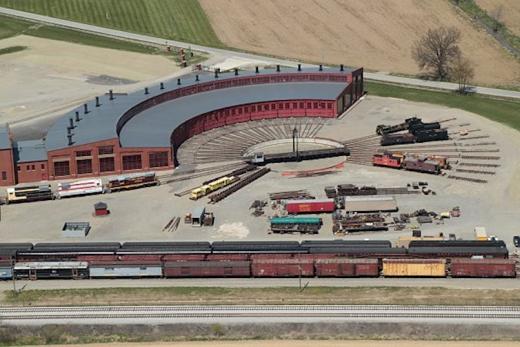
Discover Even More
My favorites.
Ohio Amish Country
Warther’s museum.
You must be logged in to post a comment.
living simply ♥ simply living well

When in Dover, Don’t Miss This
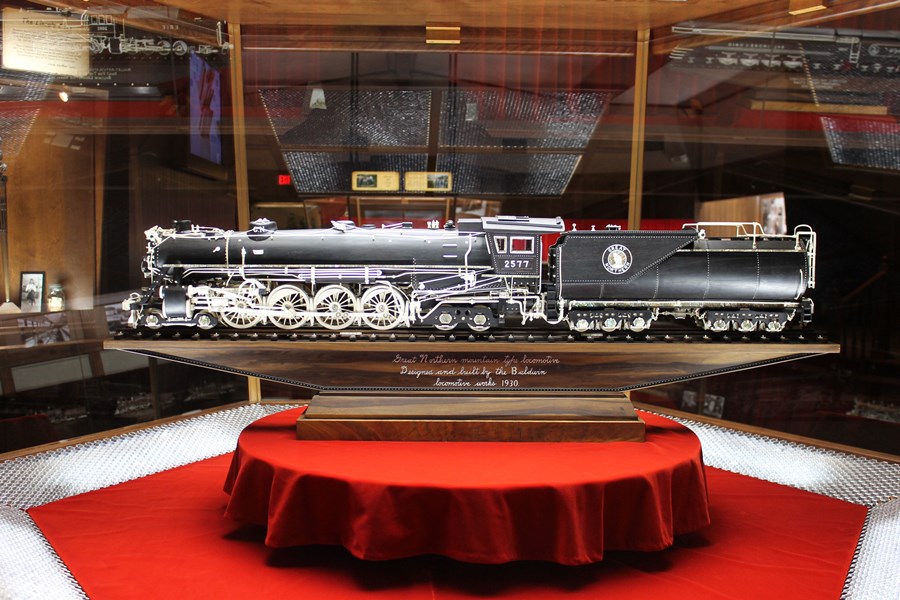
Hand-carved, Great Northern steam engine—Ernest Warther considered this his finest work.
Sometimes the most amazing treasures can be found right in your own backyard. Case in point . . . the Warther Museum in Dover, Ohio is one of those one-tank trips that, for us, is so easy to take and so easy to miss if you’re not looking for it.
Family-owned and operated, the museum is home to Ernest Warther’s stunning miniature replicas of steam engines that Warther hand carved from walnut, ebony, and ivory.
It also houses Warther’s extensive collection of arrowheads, handmade knives, and signature wooden pliers.
If you love trains, you will love this!
Though he received handsome offers for his work, Warther chose not to sell anything. Instead, he made kitchen cutlery to support his family and continued carving as a hobby. He and his wife, Freida, were content to live in their little house with their five children and lead a simple life.
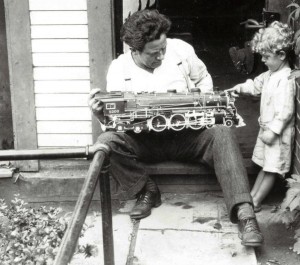
A Visit to the Ernest Warther Museum & Gardens
We didn’t know what to expect. We were on our way home from a long weekend in nearby Walnut Creek , and we knew there was a train museum in Dover. Sounded interesting, but we had never heard of Ernest Warther—have you?—and sometimes small, obscure museums turn out to be nothing more than rooms filled with memorabilia that are of no interest to anyone but the immediate family. That’s not the case here.
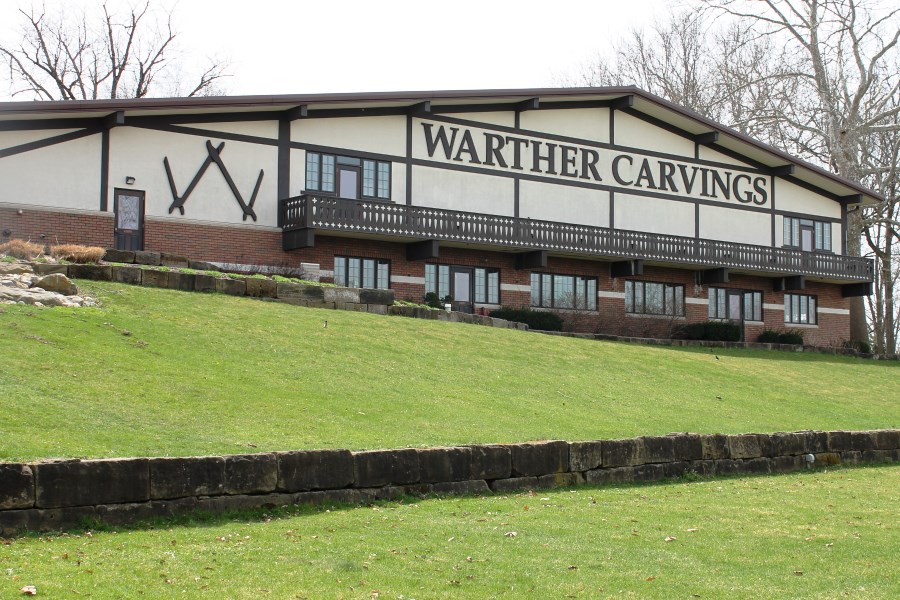
On the front left of the building is a super-sized version of Ernest Warther’s signature wooden pliers. Warther made thousands of wooden pliers that were so popular they became his calling card. The wooden pliers on the building form a perfect W for Warther.
The Warther Museum sits atop a hill in Dover, Ohio at the edge of town. A main parking lot is behind the building near the museum’s entrance. We followed the road in front of the building down to additional parking and an area that had once been a playground for Warther’s children.
The Playground
Warther then converted the hillside and lower millstream area, referred to as “Calico Ditch,” into a playground for his children and their friends.
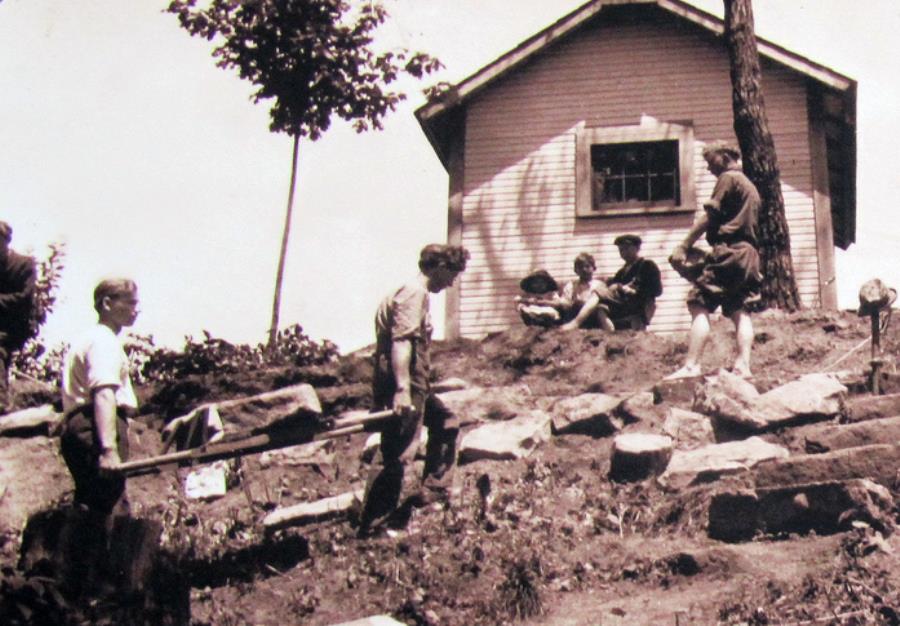
Kids from all around town came to play. There was a cave in the wall and a swing hung from a high branch of a huge Elm tree in such a way that, for a kid swinging on the hillside, it felt like flying.
The hillside is park-like . . . quiet, shaded, and restful . . . with dappled sunlight peeking through the old trees.
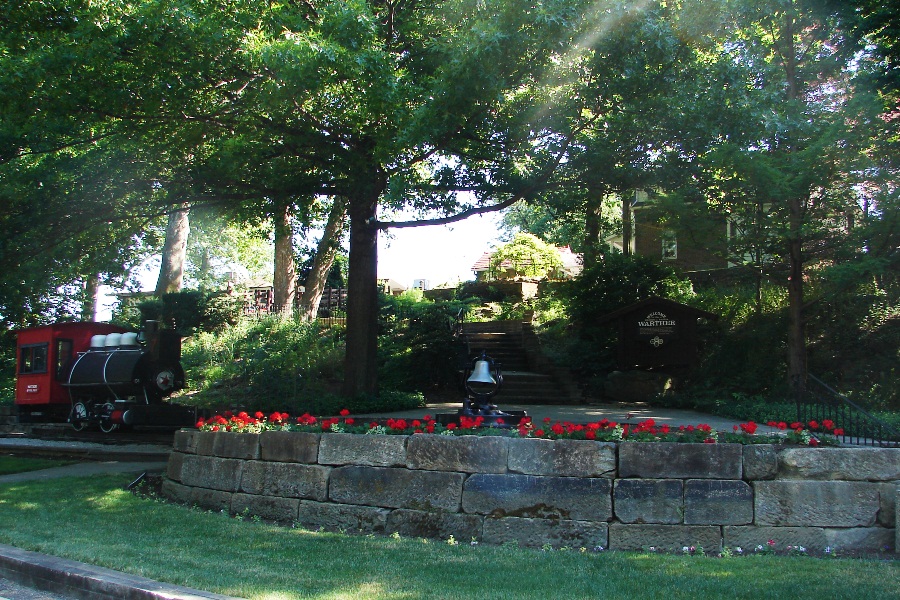
The lower parking lot is adjacent to the grassy area where Warther built the playground for his children. Through the trees, you can see the Warther home at the top of the hill.
It’s only appropriate that the playground area should have a restored telegraph office, B&O caboose, and a narrow gauge “yard” engine where small children can play and pretend to drive a train.
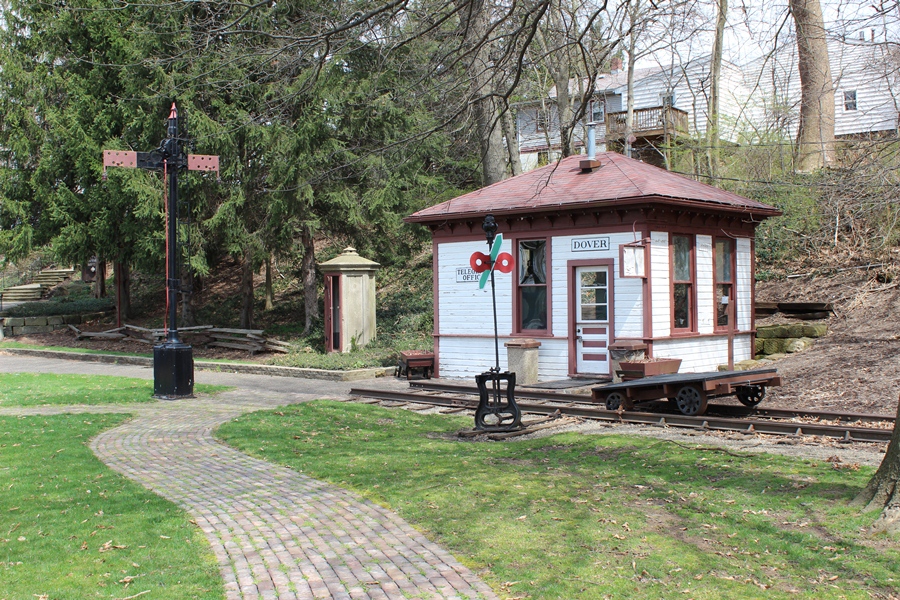
The Dover, Ohio telegraph office, restored to the late 1800’s, has real working telegraph equipment and is filled with railroad paraphernalia.
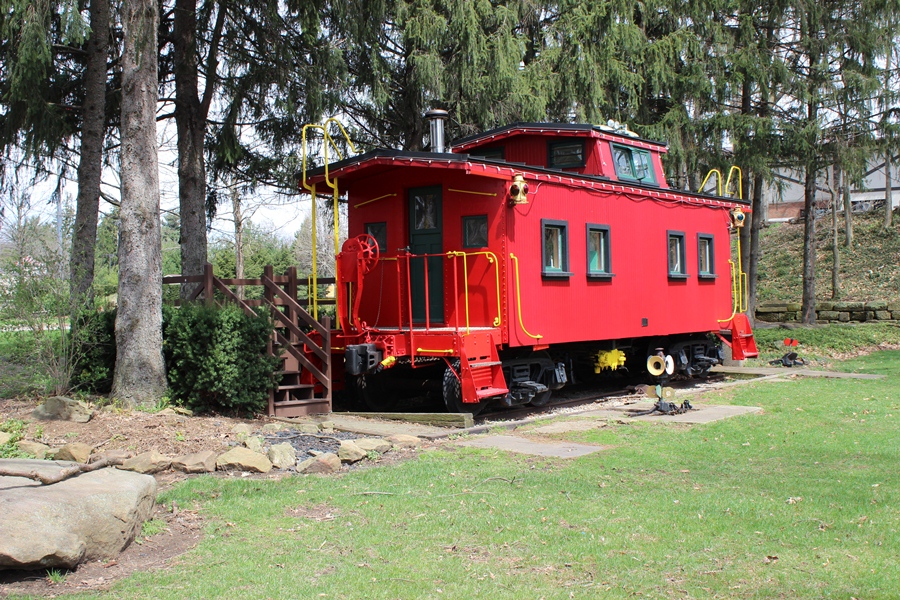
The B&O caboose is restored to the Roaring 20’s era.
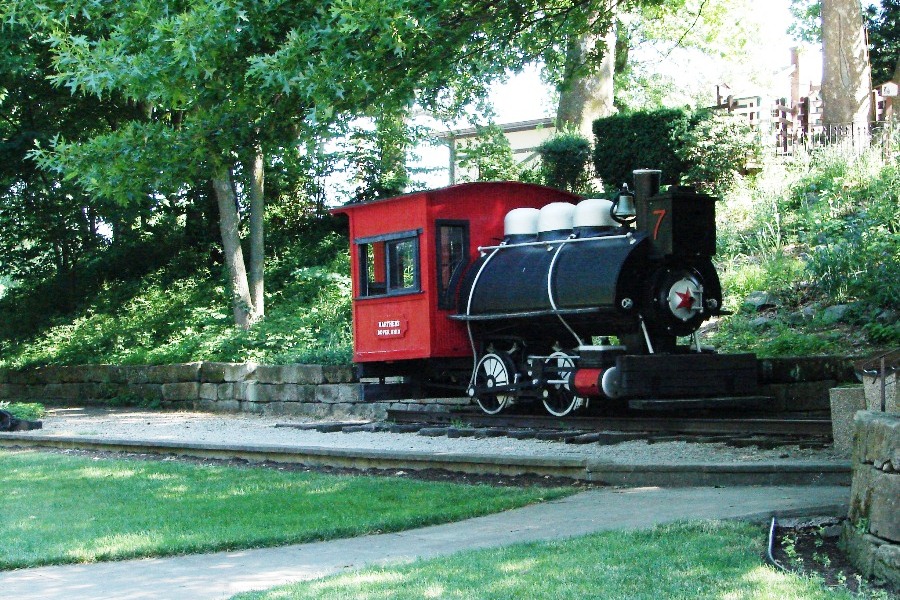
Narrow gauge “yard” engine where small children can play and pretend to drive a train.
We missed it, but it’s worth seeing Though most of the original playground is gone, a cave Warther built for his children to use as a playhouse still exists. It’s located in the wall in the hillside under the workshop and Swiss flower garden.
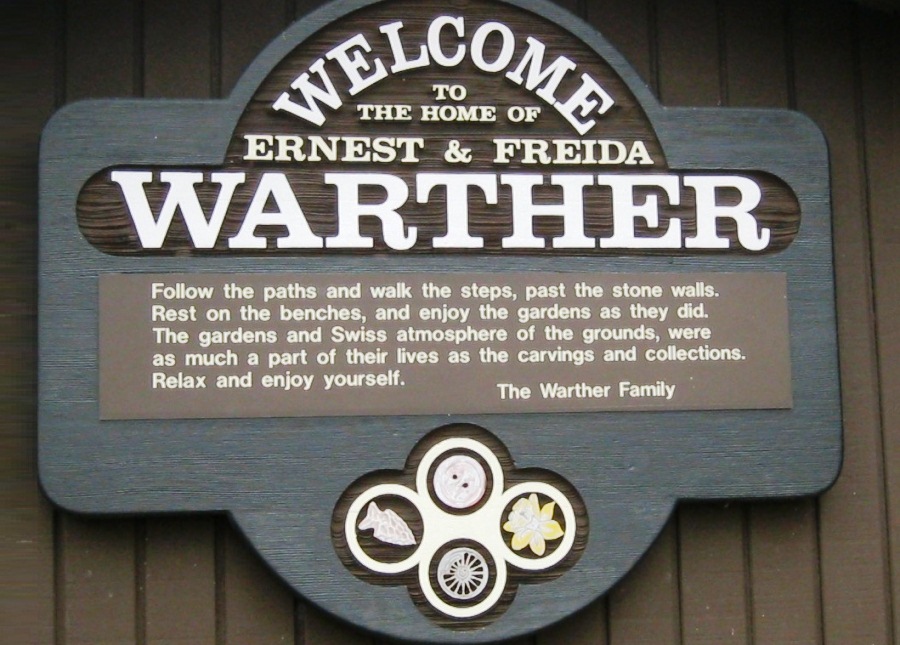
From the lower parking level there is nowhere to go, but up. A warm welcome from the Warther family greets you.
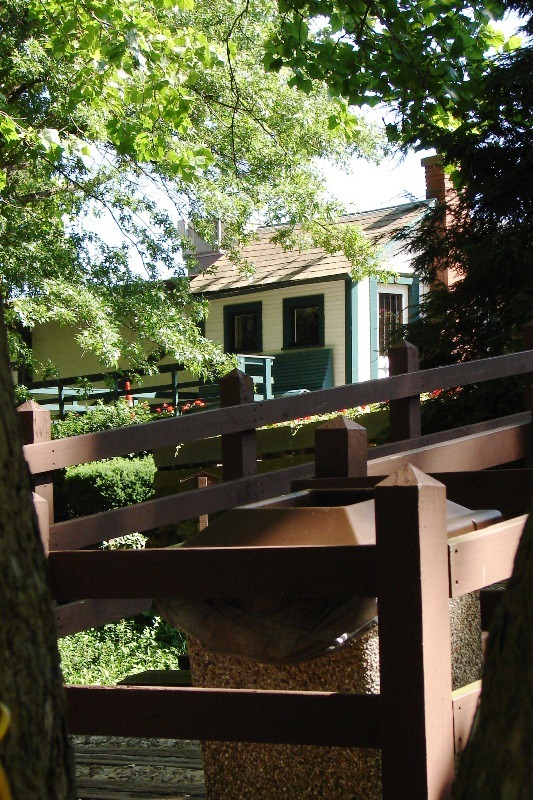
On the way up, you can stand on a certain stone to see Ernest Warther’s original workshop framed between the trunks of two trees. It’s a photo op with a posted sign marking the spot. Stone steps continue up the terraced hillside to the house and gardens.
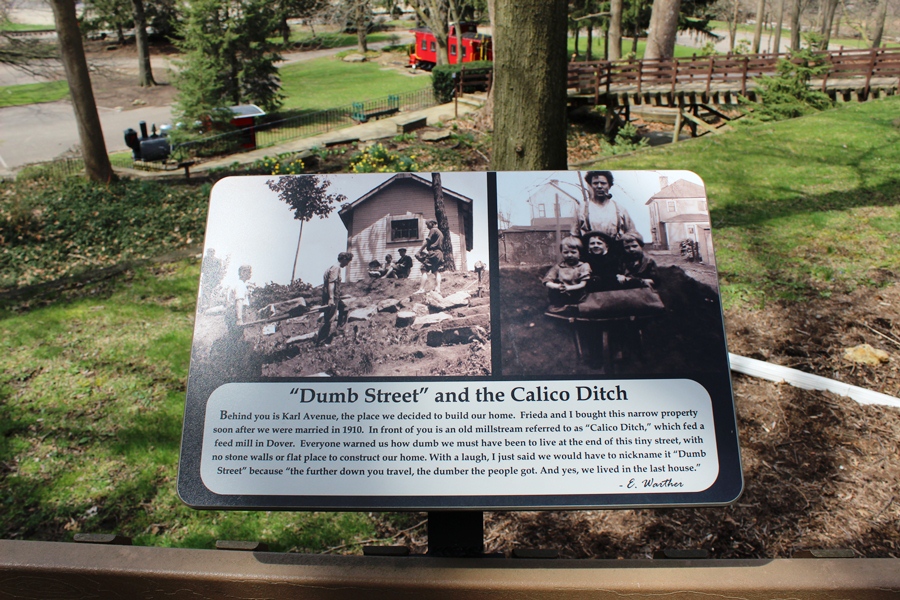
At the top of the hill, looking down on the playground.

The Warther Home
The home where Ernest and Frieda Warther lived for 63 years and raised five children sits at the top of the hill on a narrow lot at the very dead end of a residential street. Warther began building the two-story house himself in 1910 using locally-made burned bricks . It took him two years to finish.
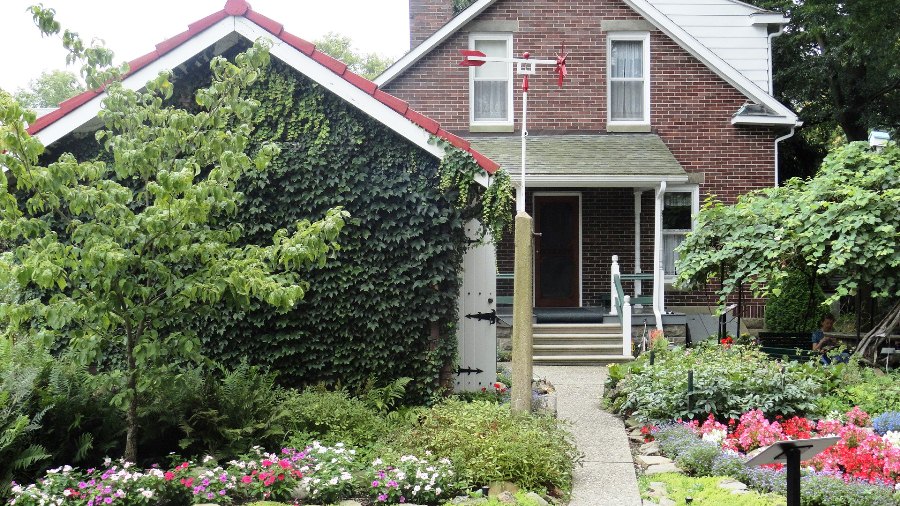
Rear entrance of the Warther home with Freida Warther’s vine-covered Button House [on left], and the grape arbor and Swiss flower gardens [on right]. (Photo: Warther Museum)
We missed it, but it’s worth seeing We had arrived late in the afternoon and didn’t have time to step inside, but the house is open for public viewing and its rooms have been restored to their former glory.
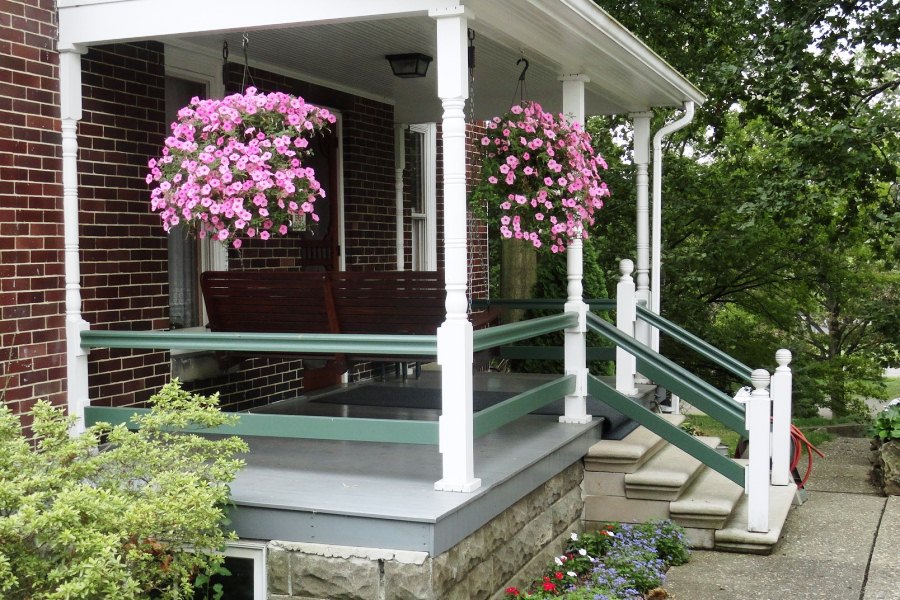
Imagine sitting on the porch swing in the summertime. Bliss. (Photo: Warther Museum)
The Button House
Freida Warther’s Button House is a small brick building directly behind the Warther’s home. A totally unexpected surprise. It appears that Freida, like her husband, was also a gifted artist.
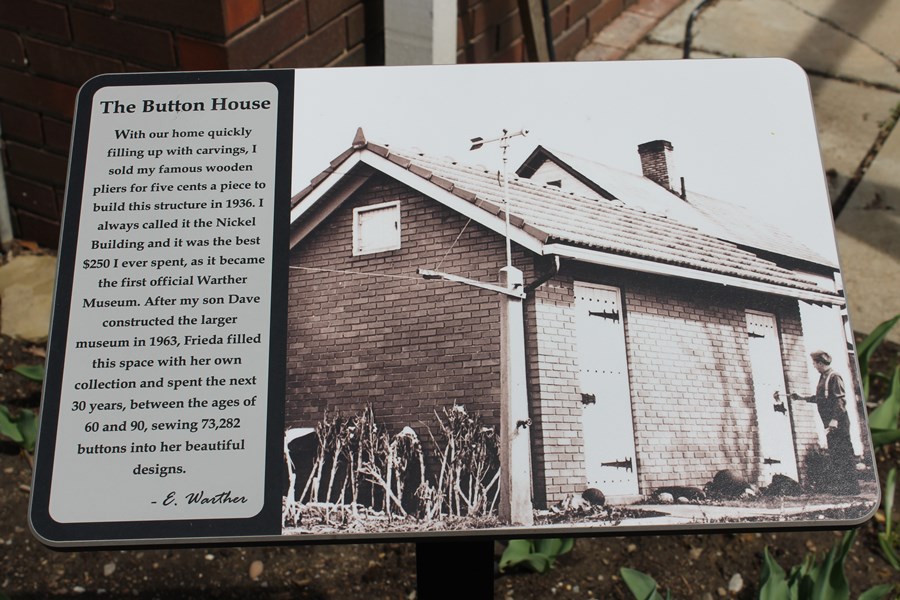
Sign at the Button House tells how, when, and why it was built. There are signs everywhere that explain what you are seeing. The signs make for an interesting and informative self-guided tour.
If you love mandalas, you will love this!
Walls and ceiling of the small building are completely covered with quilt patterns, mandalas, and other unique designs Freida created using buttons from her life-long collection.
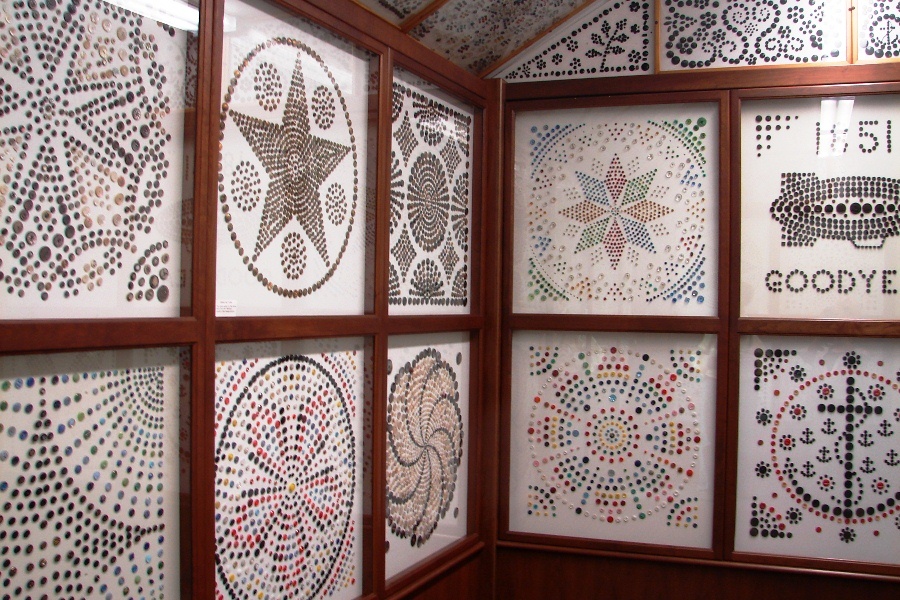
Inside Freida Warther’s Button House.
Freida began collecting buttons when she was ten years old and amassed over 100,000 in her lifetime. She had just about every type of button including hand-painted ceramic, Goodyear rubber, pearl, brass military, celluloid, calico, and even a button from Mrs. Lincoln’s Inaugural dress.
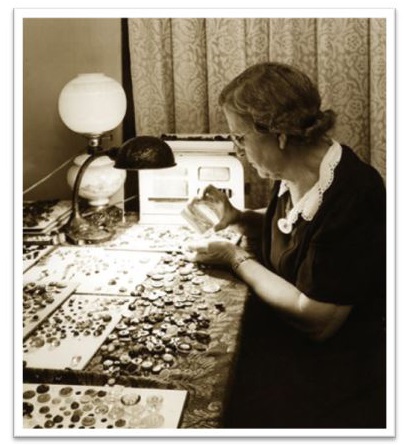
After her children were grown, Freida laid the buttons out in traditional quilt patterns and her own unique designs. She then sewed each button onto the panels by hand.
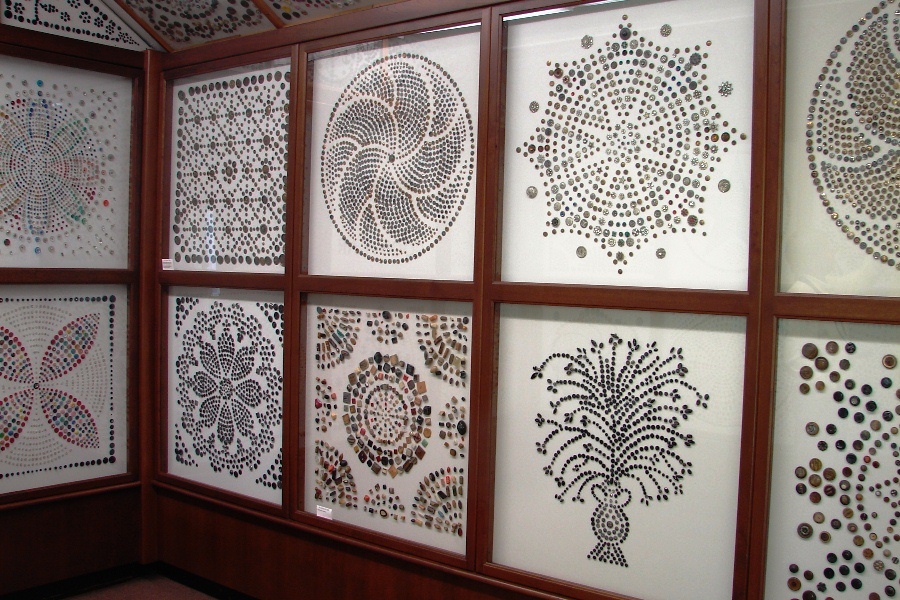
The collection is visually stunning and impressive. Over 73,000 buttons are on display. Freida arranged the buttons by color, shape, and size in elaborate patterns. It is astonishing just how intricate the patterns are.
Tools she used are also on display. Nothing fancy here . . . which makes Freida’s work all the more amazing.
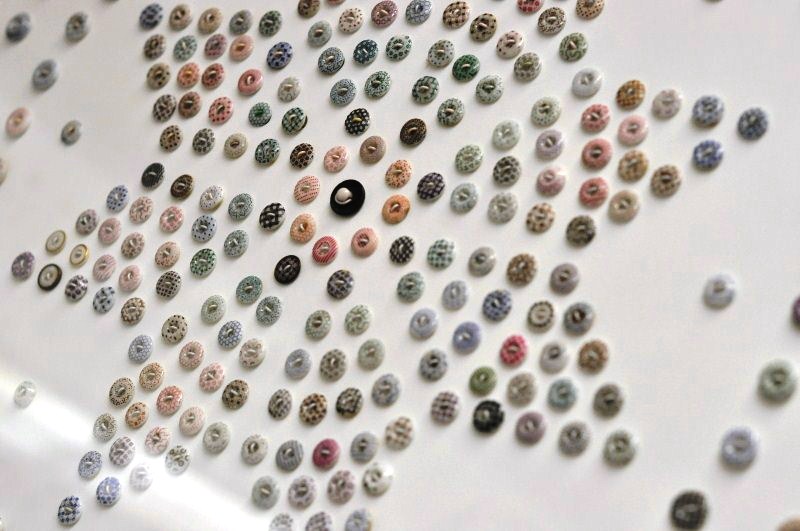
Each button was sewn on by hand. (Photo: The Little Red Hen )
The Grape Arbor and Gardens
Across from the Button House and nestled in a quiet corner of the flower garden is a grape arbor. Ernest Warther built it in 1916.
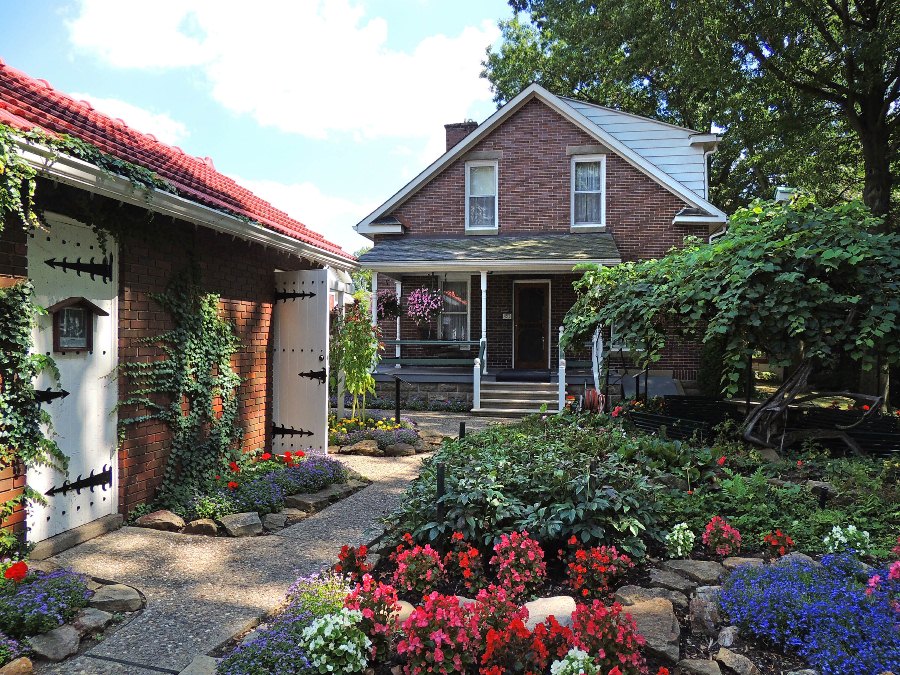
The Button House, the Warther home, grape arbor, and garden . . . lovely. (Photo: Living Our Dream )
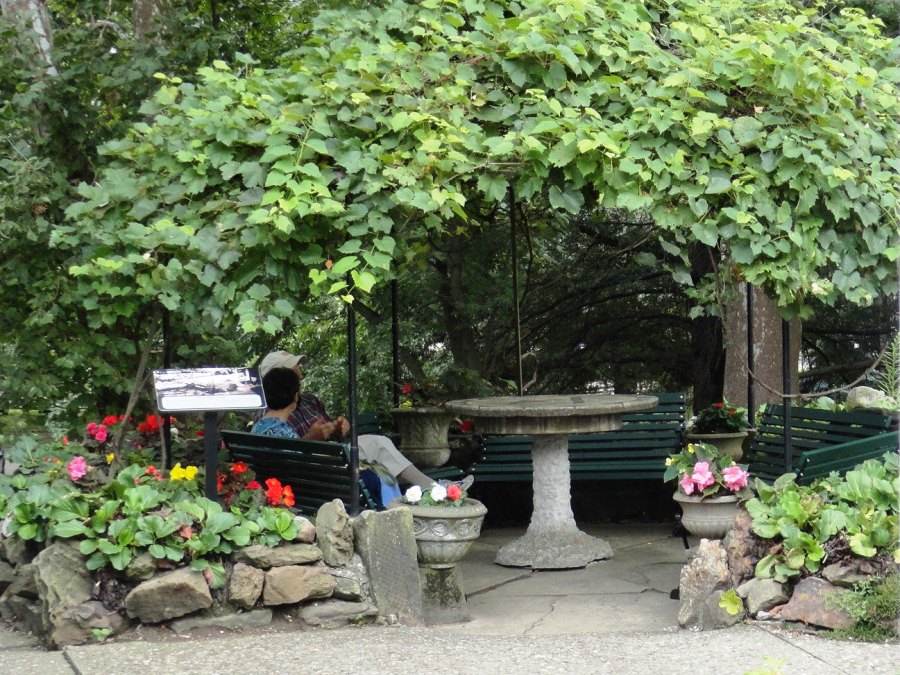
The arbor’s lush Concord grapevine is over 90 years old and provides a beautiful canopy for visitors. (Photo: Warther Museum)
In addition to collecting buttons, Freida was an avid gardener who loved to make arrangements with the flowers she grew. She designed her gardens in traditional Swiss raised beds and converted the subsoil into topsoil using her own organic gardening techniques. The gardens are still being maintained by the Warther family in the same manner.

Gardens at the top of the hill overlooking the lower playground and parking area. (Photo: Warther Museum)
The Workshop
Built in 1912, Warther’s workshop is located directly down the walkway from his home. It is a small, unassuming white building—just 8-feet by 10-feet—with green trim and a brick chimney. A side porch overlooks the terraced hillside and grassy area below where the playground once was.
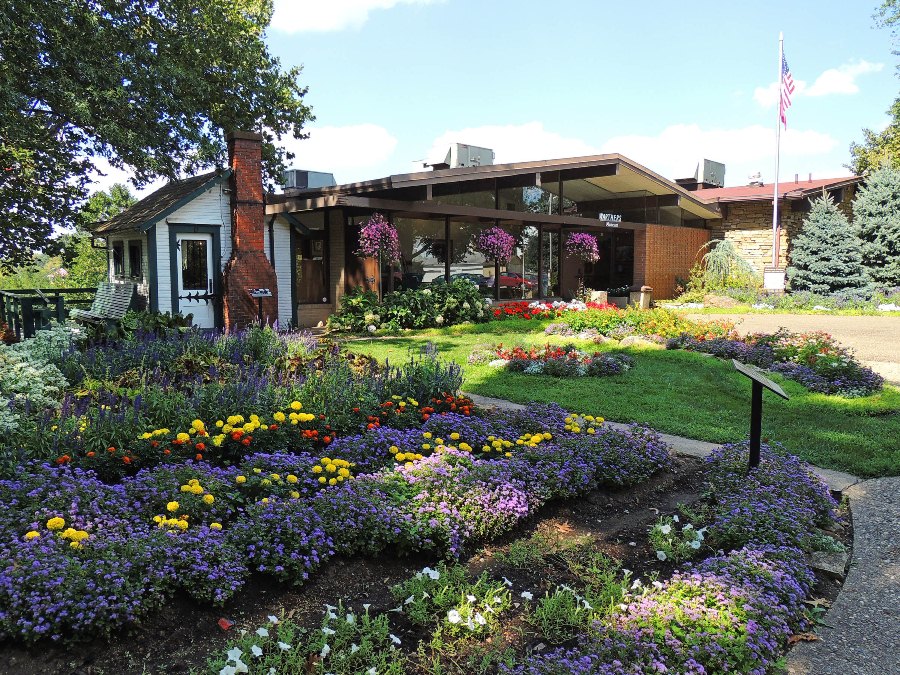
The original workshop is now adjacent to the Warther Museum. (Photo: Living Our Dream )
Warther hand-carved everything—he never used power tools of any kind. When he couldn’t find a knife to suit his carving needs, he made his own. When his carving knives would not stay sharp, he invented one with interchangeable blades. Eventually, his knife making evolved into Warther Cutlery , which is the family’s current business.
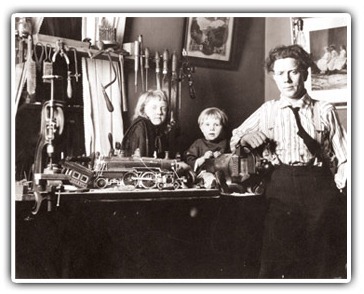
Ernest Warther with his children in his workshop. (Photo: Warther Museum)
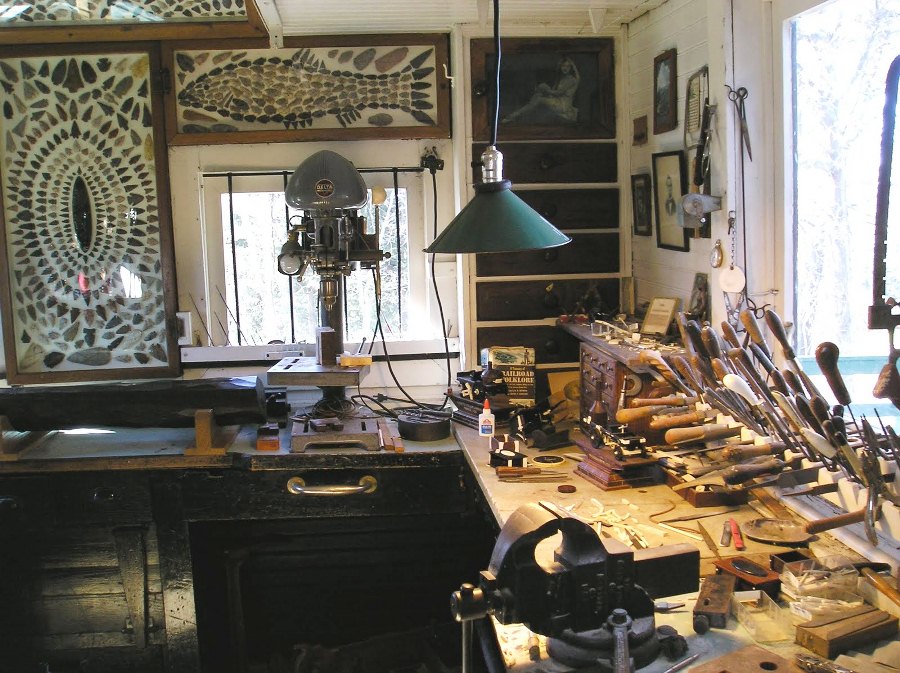
Warther’s workshop, just as he left it . . . with his many chisels, carving knives, and an unfinished locomotive sitting on his workbench. (Photo: Ohio Festivals )
Ernest and Freida spent many Sunday afternoons taking long walks looking for American Indian arrowheads and artifacts. They had ultimately amassed over 5,000 pieces, most of which were found in Ohio. On display in the workshop are many of the arrowheads Warther collected while hiking with Freida. They are arranged in patterns much the same as Freida’s buttons.
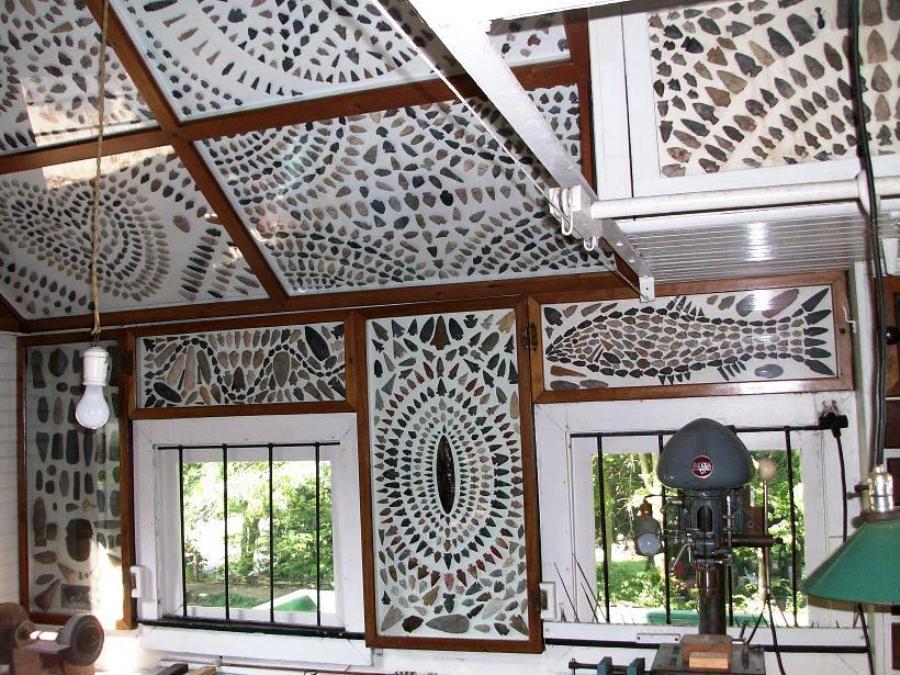
Framed displays of the Warther arrowhead collection cover walls and ceiling in the original workshop. (Photo: Ohio Festivals )
Warther Museum
In 1963, Warther’s son Dave built a building adjoining the original workshop to house his father’s carvings. The building now serves as a lobby for the actual museum.
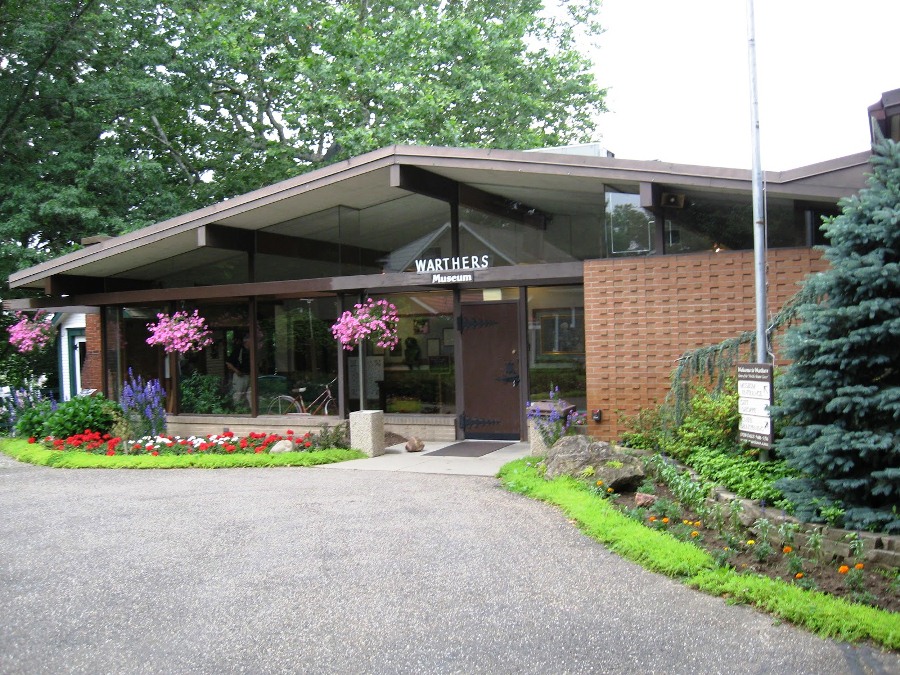
Entrance to the Warther Museum.
With the opening of the new museum, Warther was honored with a parade and program at Crater Stadium where he was presented with a bronze bust of himself. The bust, as well as a case of arrowheads from his collection, are on display in the museum lobby.
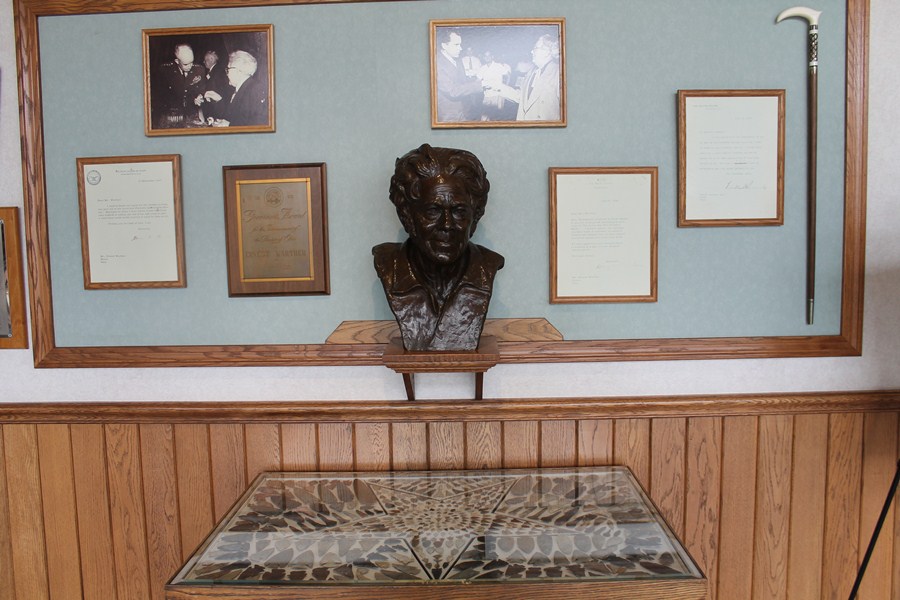
The first section of the museum is devoted to Warther’s early years. On display are photographs, memorabilia, and countless varieties and sizes of the “signature” pliers Warther made.
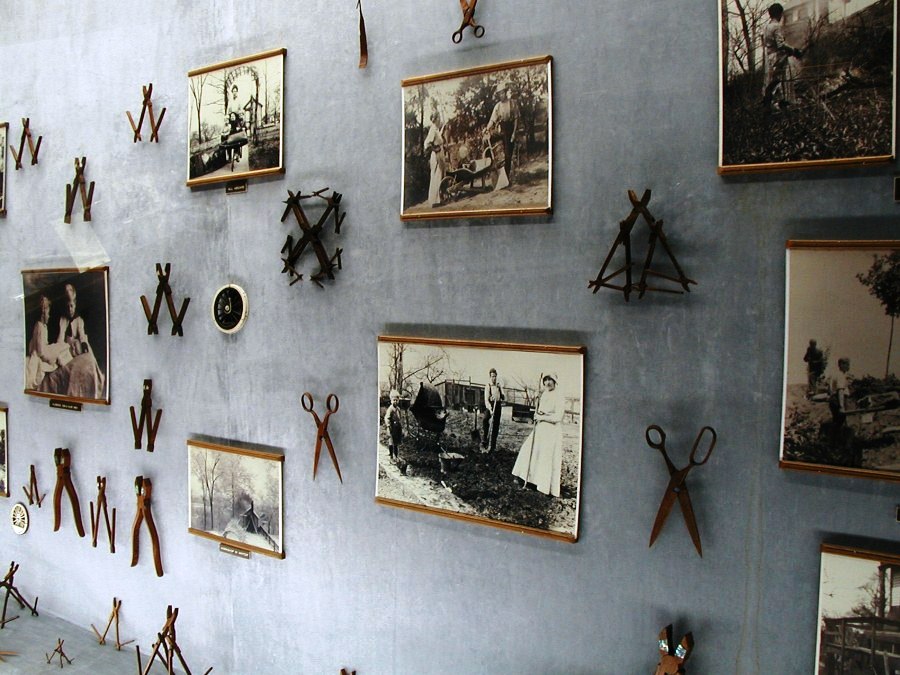
Ernest Warther carved about 750,000 wooden pliers in his lifetime.
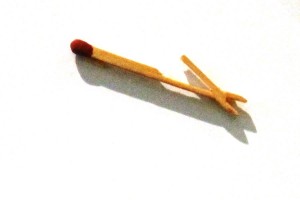
Family trees
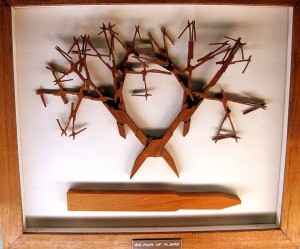
The Pliers Tree
The Pliers Tree From June 24 to August 28, 1913, Warther worked on the largest “family” tree he would ever make. Known as the Pliers Tree, the tree was carved from one single block of wood and has 511 interconnected, working pliers made with 31,000 cuts. The entire tree can be folded back into its original block of wood. The Pliers Tree was displayed at the Chicago World’s Fair in 1933. Professors from Case Western University studied it and declared that “one would have to have an advanced mathematical education to be able to design a block of wood of the correct shape to begin such a project.” Warther, who only went as far as the second grade, replied that he was glad he was told this after he made the tree and not before.
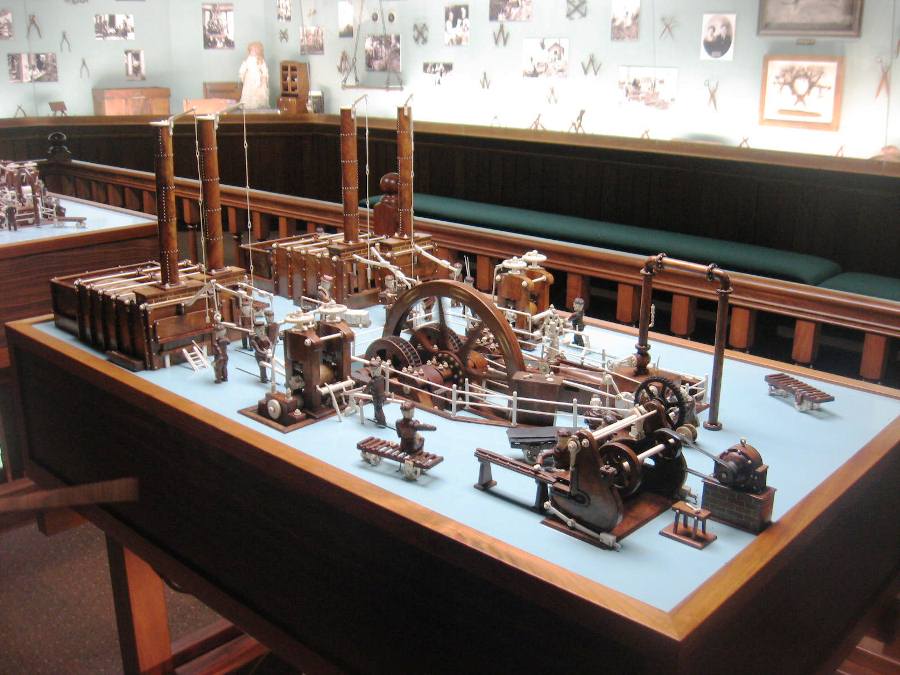
Mechanical model of the local steel mill where Warther worked. (Photo: Steve Brown )
Carved out of walnut and ivory, the model accurately depicts the daily workings of the mill in detail along with its quirkier side, including a sleeping worker, an irate foreman, and a drunken employee hiding in the corner bending his elbow to covertly down a pint of whiskey.
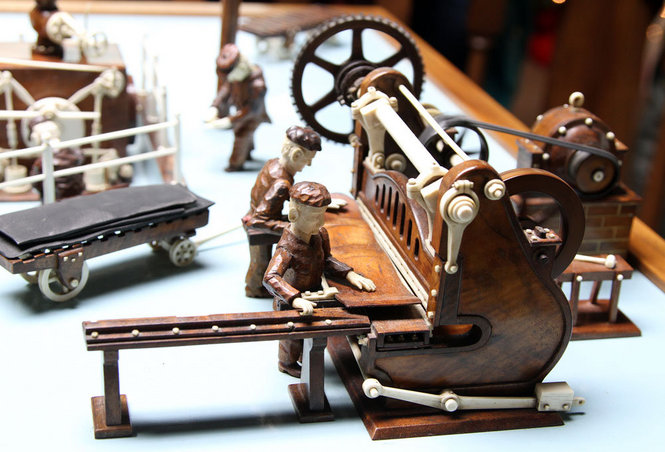
Unbelievable! Though he only had a second-grade education, Warther was able to engineer rotational motion into linear motion, making the various carved figures of his mill move. The complex circular and linear motions are all driven by one sewing machine motor, hooked up to a dizzying array of pulleys and gears on the underside of the display table to control the movement and speed of each figure.
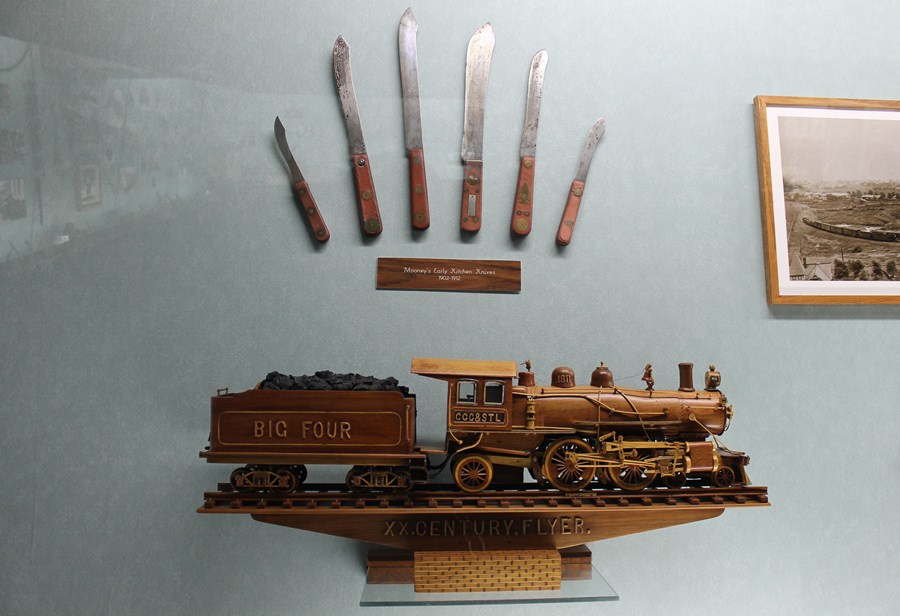
The Big Four Atlantic was carved in 1920. Warther’s masterful sense of scale and proportion are clearly evident. Because they were carved from self-oiling South American wood, all train locomotives and cars still operate.
The collection starts with Hero’s Engine from 250 BC and ends with the Union Pacific Big Boy Locomotive of 1941.
There are 64 engines in the collection, many of them with thousands of delicate interconnected moving parts.
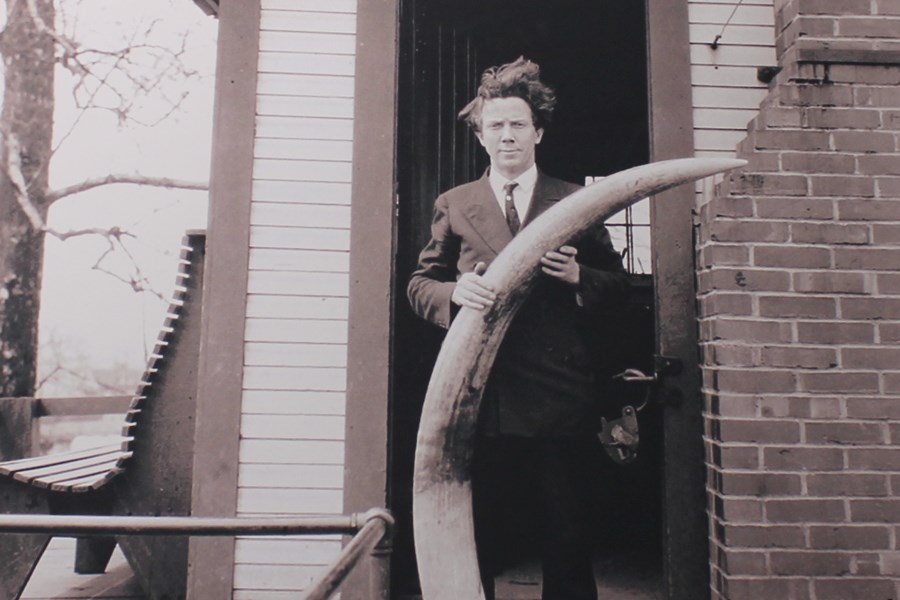
Warther’s first fifteen steam engines were carved from bone and walnut. In 1923, he was able to purchase ivory.
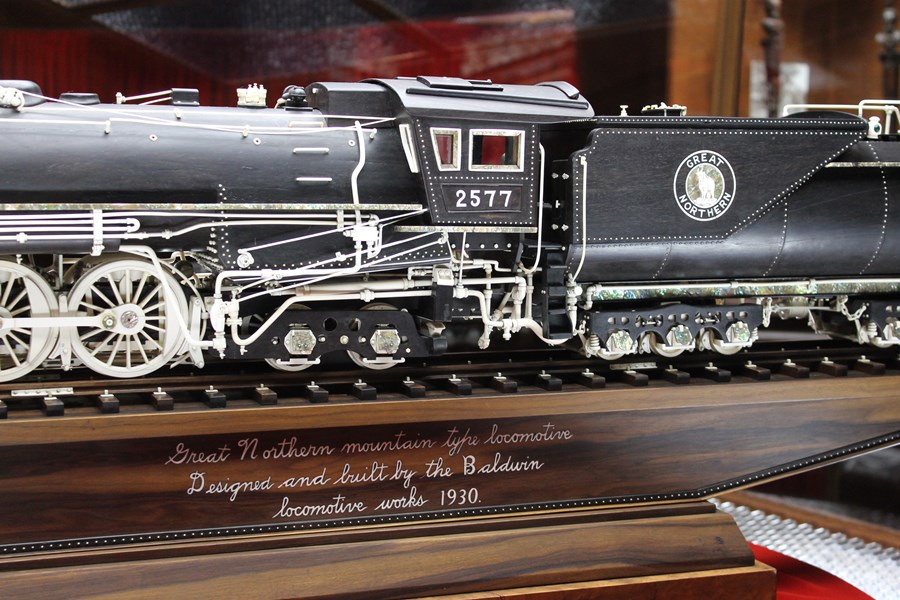
In 1933, Warther completed his finest work, the Great Northern Locomotive. The engine has 7,752 individually carved pieces with a multitude of lines and rivets—each one an exact replica of the real thing—and a “goat” logo in ivory surrounded by mother of pearl. Warther’s own handwriting, inlaid in the base, is hand-carved ivory.
When railroads converted from steam to diesel power, Warther vowed he would never carve a diesel engine if he lived to be 1000. He retired for four years and, at 72, began carving his next great work, “Great Events in American Railroad History.”
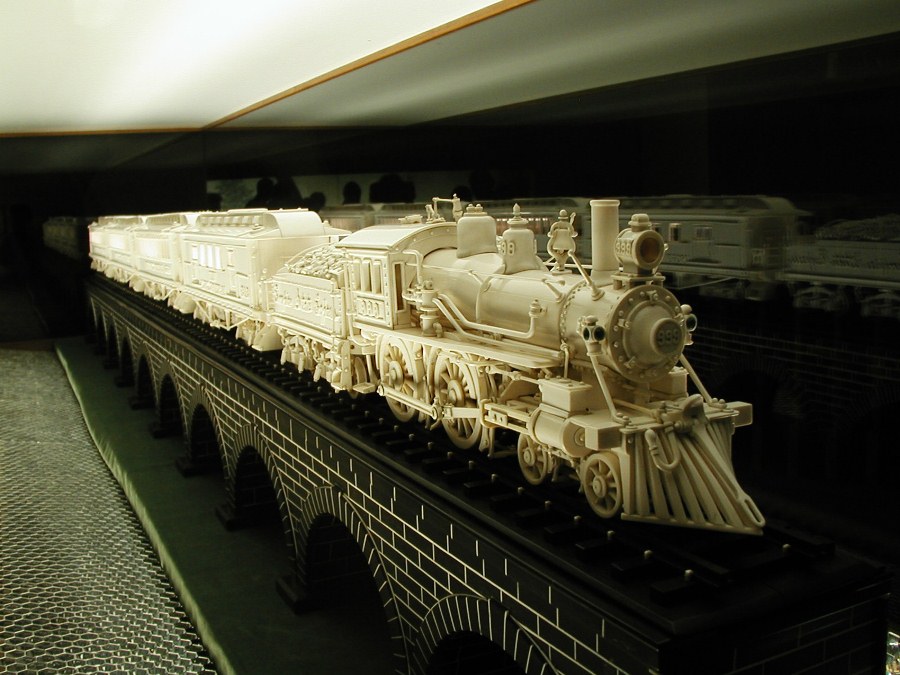
The Empire State Express, and the “stone” arched bridge the train sits on, [above and below] is stunning. At 8-foot long, the it is the largest working ivory carving in the world. The train is carved entirely of ivory . . . and the bridge is made from blocks of ebony with inlaid ivory “mortar.”
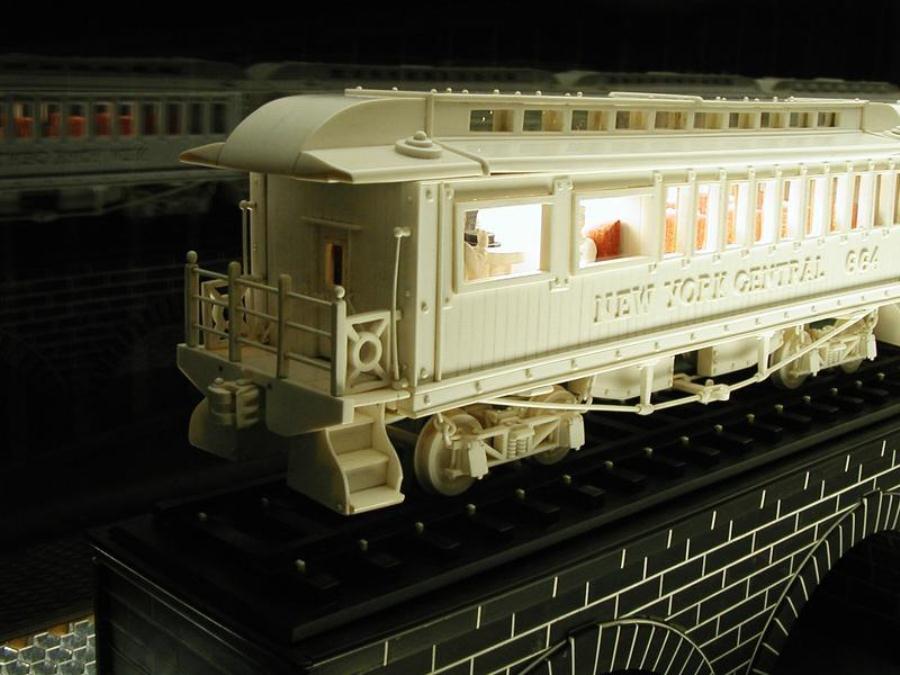
Carvings for the “Great Events in American Railroad History” include the 8-foot long Empire State Express [above], a solid ivory representation of the driving of the golden spike on the transcontinental railroad, and Lincoln’s funeral train [below] which was completed on April 14, 1965—the 100th anniversary of Lincoln’s assassination. Warther was 80 years old at the time.
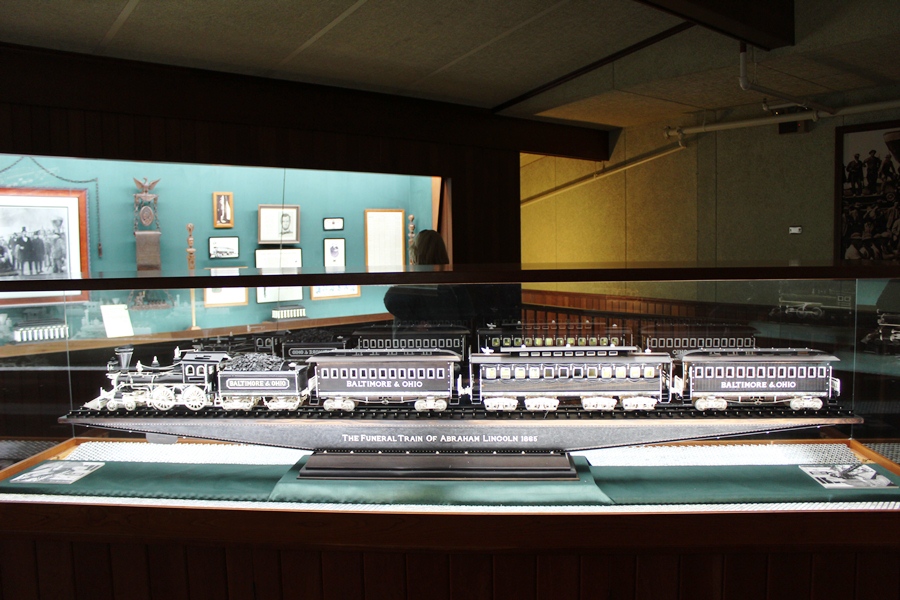
The Lincoln funeral train was carved from ebony and ivory with mother of pearl accents at the bottom of each car. Eyetooth of hippopotamus, the finest grade of ivory, was used. A miniature carving of Lincoln’s body rests in a casket in the center car.
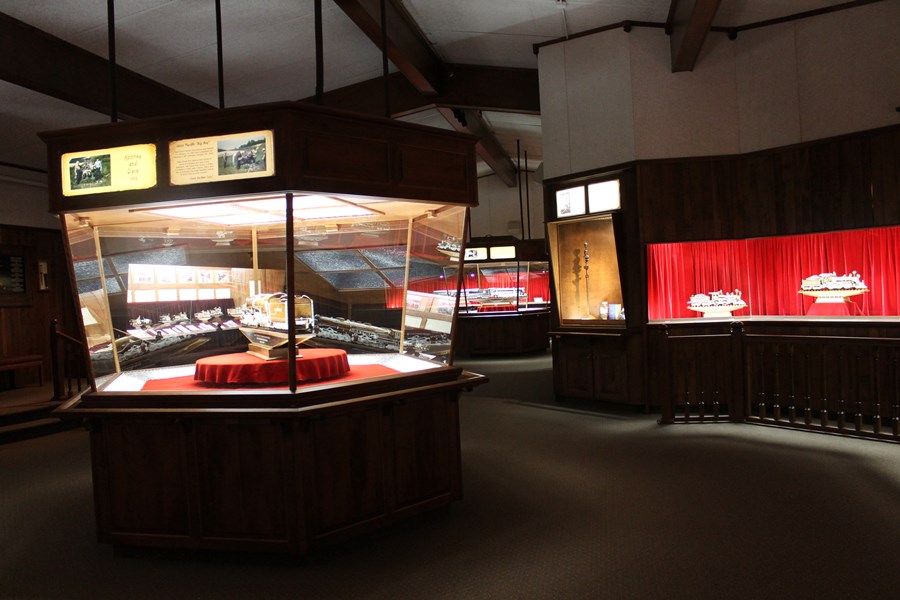
Exhibits at the Warther Museum.
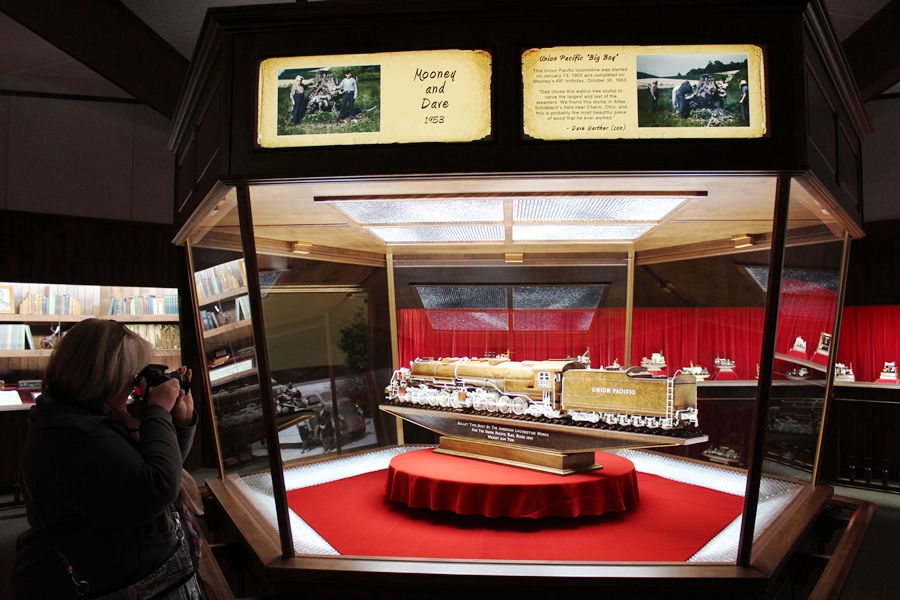
The Union Pacific “Big Boy” locomotive, the largest and last of the steamers, was carved from a single walnut tree stump found in Charm, Ohio. Warther began carving the engine on January 13, 1953 and finished on his 68th birthday, October 30. 1953.
The Lincoln Cane Warther carved the Lincoln cane while sitting in front of the fireplace during a snow storm. He finished it in 16 hours over four evenings. He then invited people to try to touch the inner-most ball—yes, there is a hand-carved ball inside the cane—with their finger. He told them if they could touch it, he would give them the cane. Visitors brought in infants to try, but no one could do it.
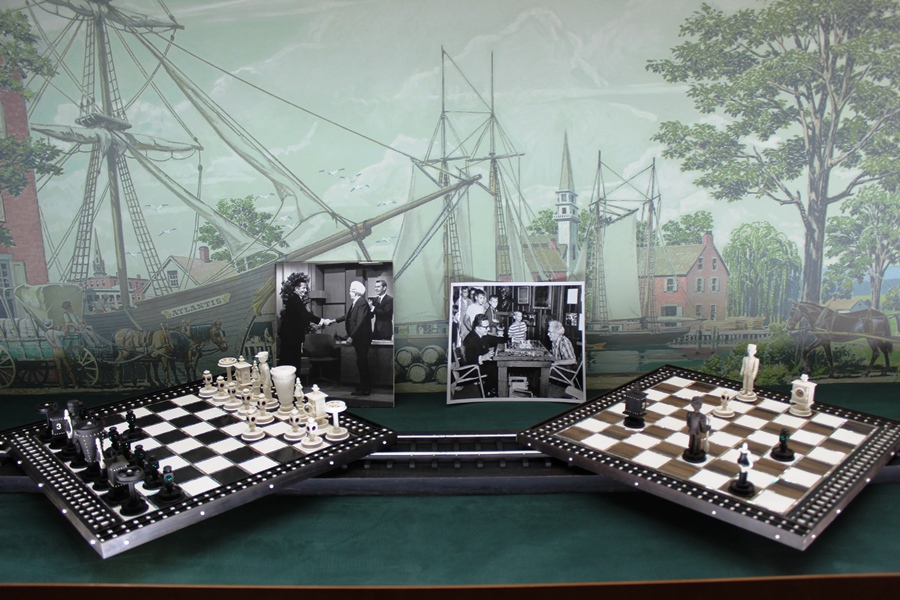
Chess set of ebony, ivory, and pearl Warther hand-carved for comedian Henry Morgan, who helped get Warther on the Tonight Show with Johnny Carson in 1965.
IMHO, Ernest “Mooney” Warther was a genius. His talent, time management, and goal setting skills were exceptional . . . and he could pin-point to the day when he would finish carving one of his engines. He woke up every day at 2AM, carved until 5AM, had breakfast with his family, worked a full day (first at a steel mill, then making kitchen cutlery for a living), played with his children after school (and later his grandchildren), had dinner, carved for two more hours, slept . . . and, then, would start it all over again. He did this virtually every day of his life until he died in 1979 at the age of 84. He was driven and disciplined . . . and still had time to make a living, raise a family, travel, and enjoy life, family, and friends to the fullest.
During World War II, Warther stopped carving to make hand-forged Commando knives for local servicemen. He didn’t believe in war, but felt every serviceman should have the best knife possible.
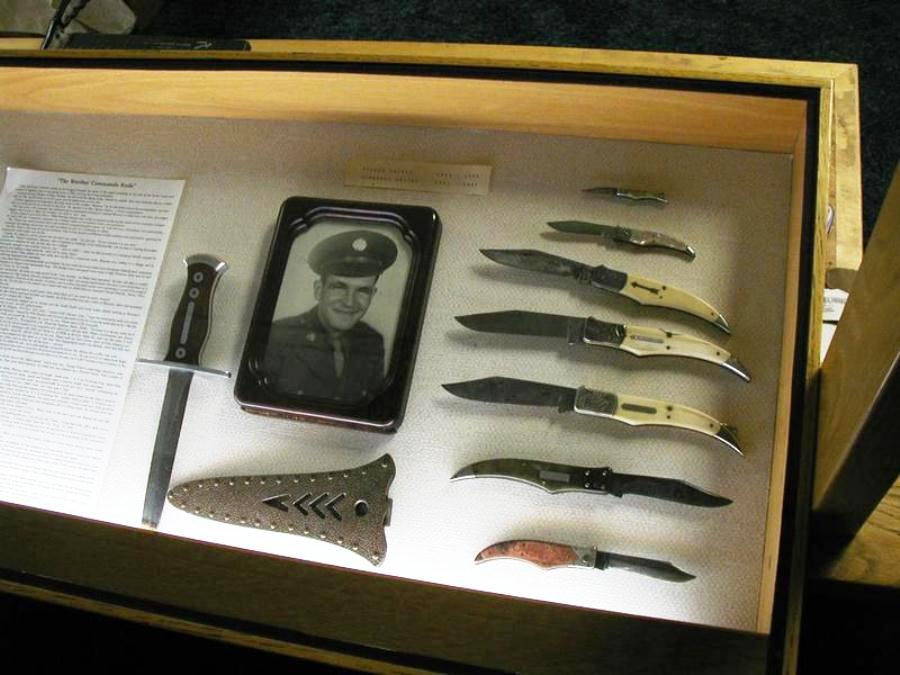
Warther hand-forged Commando knives for local servicemen during World War II.
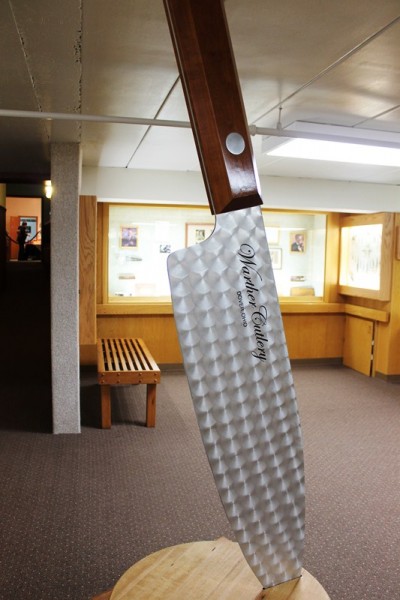
A giant Warther knife with the signature fine swirl design on the blade.
Each knife he made was personalized with the serviceman’s name stamped into a brass plate in a cocobolo handle. Each also included a sheath of copper and stainless steel. When Warther heard that the war had ended, he put down the knife he was working on and never finished it. That knife remains in the museum today unfinished.
Just before leaving the building, you can view the factory for Warther Cutlery , the family business started in 1902, and stop at the delightful gift shop that carries the entire line of handcrafted cutlery as well as other high quality items.
The Warther Museum is loaded with model train and other carvings, arrowheads, knives, photographs, and other memorabilia that paint a vibrant history of an extraordinary man, his life, and family. There is a small admission fee for the hour long guided tour—it’s well-worth every penny.
If you ever have the chance to go, prepare to be amazed!
Some photos posted were found online. Links to the source sites are provided below. I encourage you to visit these sites to read what others have to say about Ernest Warther and the Warther Museum. Craftsmanship Museum | Living Our Dream | Ohio Festivals | Olivia and Fred Harrington | Roadside America | Steve Brown | Teleoscope | The Little Red Hen
Similar posts you might like
Share your thoughts cancel reply.
Your email address will not be published. Required fields are marked *
Captcha loading... In order to pass the CAPTCHA please enable JavaScript.
ADVERTISING
Some pages on OUR EMPTY NEST have affiliate links where we receive a small percentage from sales at no extra cost to you. Full Disclosure

QUICK LINKS
Tour Type: Short Tours
Heart of a nation: a patriotic journey.
Read More…
America’s North Coast
Christmas on the potomac, autumn memories, horse tails & bourbon trails, upcoming tours:.

Cleveland Guardians vs San Diego Padres
Progressive Field
- Jul 19th, 2024
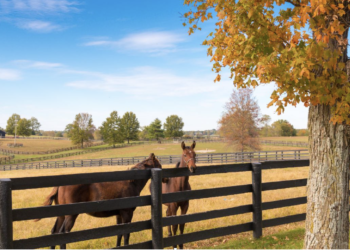
Horse Tails & Bourbon Trails
A Warther Signature Tour
- Jul 26th - Jul 28th, 2024
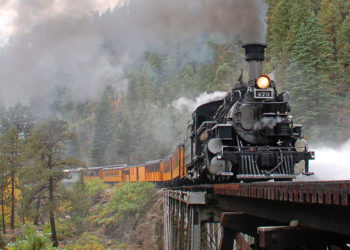
Trains & Parks of Colorado
- Aug 10th - Aug 18th, 2024

Cleveland Guardians vs Chicago Cubs
- Aug 14th, 2024

221 Front Ave. SW New Philadelphia, Ohio 44663 Office: 330.556.4535 Direct: 330.340.0122 Contact Us
- Browse Tours
- Guest Photos & Stories
- Travel Policies
- Why Group Travel?
Join Our Email List
Don't miss new tour announcements, special offers, and news from Warther Tours!
Join Email List

IMAGES
VIDEO
COMMENTS
Whether you prefer grand tours or intimate ones, a Warther Tour will create a lifetime of memories. Skip to content. Browse Tours; Cruises; Our Guides; Guest Stories; Travel Policies; Why Group Travel? Contact Us; ... Ohio 44663 Office: 330.556.4535 Direct: 330.340.0122 Contact Us. Home; Browse Tours; Cruises; Guest Photos & Stories; Our Guides ...
Whether you prefer grand tours or intimate ones, a Warther Tour will create a lifetime of memories! See all of our published tour dates, listed chronologically below. Skip to content. Browse Tours; Cruises; ... Ohio 44663 Office: 330.556.4535 Direct: 330.340.0122 Contact Us. Home; Browse Tours; Cruises; Guest Photos & Stories; Our Guides ...
Warther Tours, New Philadelphia, Ohio. 1,803 likes · 1 talking about this · 3 were here. Warther Tours specializes in tours guaranteed to provide a truly unforgettable life experience. Warther Tours, New Philadelphia, Ohio. 1,793 likes · 7 talking about this · 3 were here. ...
Closed now. 9:00 AM - 5:00 PM. Write a review. About. The Warther Museum is home of the world famous woodcarvings of steam engines by Ernest Mooney Warther carved out of ivory, ebony, and walnut. Mrs. Warther's button collection numbers over 73,000 buttons in patterns, and her Swiss style gardens still bloom seasonally to this day.
Warther Museum, located at 331 Karl Avenue in Dover, is dedicated to the genius and perfection of Warther's impeccable, unmatched carvings. ... Open seven days a week, Warther Musuem makes for the perfect destination on any tour of Ohio's Amish Country. Hours of operation are daily from 9 a.m. to 5 p.m., with the final tour of each day ...
Guided Tours are everyday at 10:00am, 11:30am, 1:00pm, and 2:30pm ... Last Admission each day is 4:30pm. Self-Guided Tour of the Ernest Warther Museum & Workshop available all day. Access to Frieda Warther's Button Collection & the Warther Family Home. ... Dover, OH, 44622 (330) 505-6003 [email protected]. Hours. Mon 9am - 5pm. Tue 9am ...
The result earned him the title of the World's Master Carver. The Ernest Warther Museum and Gardens is built around the original location of Ernest and his wife's home, his original workshop, and the first museum which opened on May 10th, 1936 in their backyard. ... Book a Tour "Do not put off 'til tomorrow what you can do today ...
Admission to the Ernest Warther Museum and Gardens in Dover, Ohio, is approx. $20/person (less for students and seniors). Open: March through December. Guided tours are offered Thursday - Saturday, at 10am, 12 pm, and 2pm. Self-guided tours are available most days from 9am - 4:30pm. Location: 331 Karl Ave. in Dover, Ohio; Phone: 330-505-6003
331 Karl Ave., Dover, OH 44622. ... Ernest "Mooney" Warther. A one hour guided tour takes guests through the life and works of a sculptor who captured the evolution of the steam engine out of ebony, ivory, and walnut. Warther's home and original studio is on display as well. His wife, Frieda, was an artist in her own right and she created Swiss ...
Mark Warther. Mark Warther has been leading personalized, fully escorted tours to some of the world's most desirable locations for more than a decade, earning coverage in respected travel media outlets including AAA Home & Away magazine and PBS television. The quality and value of the tours Mark organizes have earned him a loyal following, as ...
The Ernest Warther Museum And Gardens, Dover: See reviews, articles, and photos of The Ernest Warther Museum And Gardens, ranked No.11 on Tripadvisor among 19 attractions in Dover. ... Ohio City Neighborhood Food Tour of Cleveland. 83. Recommended. 100% of reviewers gave this product a bubble rating of 4 or higher. Food & Drink. from . C$126.17.
Warther Museum 331 Karl Avenue Dover, Ohio 44622 330-505-6003 | thewarthermuseum.com Hours: Daily; closed New Years Day, Easter, Thanksgiving, Christmas. ... Although visitors can navigate the museum on their own, make time for the tour. A little over an hour long, the tours are led by docents who are very knowledgeable; their narration of the ...
The museum has a gift shop and offers group tours. A signature of Warther's work is intricate scrimshaw inking on many of his ships. Family friends from Dover who were talented scrimshaw artists showed him how to do it - scoring the design into ivory then covering it with India ink, and wiping off the excess.
Ernest Warther Museum & Gardens is a unique attraction in Dover, Ohio, that showcases the life and work of a master carver and his family. You can admire the intricate wood and ivory sculptures, explore the Swiss-style gardens, and learn about the history and culture of the Warther family. Whether you are a fan of art, history, or nature, you will find something to enjoy at this museum. Visit ...
Tour our gallery spaces with over 100 pieces in the collection and learn about the awe-inspiring life of Ernest Warther. Explore the Warther family residence, Swiss-styled gardens, historic "Calico Ditch," 3 acre park, and Frieda Warther's collection of over 73,000 buttons. ... Dover, OH 44622 Directions. ... 331 Karl Ave. Dover, OH 44622 ...
Whether you prefer grand tours or intimate ones, a Warther Tour will create a lifetime of memories! See all of our published cruises, listed chronologically below. To learn about future tour ... Ohio 44663 Office: 330.556.4535 Direct: 330.340.0122 Contact Us. Home; Browse Tours; Cruises; Guest Photos & Stories; Our Guides; Travel Policies; Why ...
Ernest Warther Museum & Gardens, Dover, Ohio. 13,321 likes · 414 talking about this · 10,017 were here. www.thewarthermuseum.com
Visit the Warther Carving Museum, in Dover, Ohio, and you'll experience the story of the Warther family and how the Warthers combined love of family and a love of hobbies to create an amazing legacy. ... Amish Buggy Rides Amish Farm Tours Golf Courses Horseback Riding Miniature Golf Petting Zoos Year Round Christmas. Articles. Dutch Valley ...
It's no secret that Warther spent his life doing wood carving, focused mostly on precise working replicas of steam locomotives. What's great is how the facility is set up. I usually dislike guided tours. I tend to go faster than the tour guide. ... Dover, OH 44622-2767. Full view. Best nearby. Restaurants. 75 within 3 miles.
Case in point . . . the Warther Museum in Dover, Ohio is one of those one-tank trips that, for us, is so easy to take and so easy to miss ... (330) 343-7513 Open 7 days a week 9AM - 5PM / Last tour starts 3:45PM website | facebook | instagram. Family-owned and operated, the museum is home to Ernest Warther's stunning miniature replicas of ...
Warther Tours PO Box 1011 221 Front Ave. SW New Philadelphia, Ohio 44663. By Phone: Office: 330.556.4535 Direct: 330.340.0122. On Social Media: Our Facebook Page Our LinkedIn Page Our YouTube Channel. By Email: Please complete the form below to contact us by email. All fields are required.
The Ernest Warther Museum Arts & Culture in Dover, Ohio. Welcome to The Ernest Warther Museum Add to Itinerary. Contact Details. Website. https://thewarthermuseum.com. Phone. 330-505-6003. Address. 331 Karl Ave., Dover, OH 44622. Get Directions ... Ernest "Mooney" Warther. A one hour guided tour takes guests through the life and works of a ...
A Warther Signature Tour. Aug 10th - Aug 18th, 2024 Cleveland Guardians vs Chicago Cubs. Progressive Field. Aug 14th, 2024 All Tours . 221 Front Ave. SW New Philadelphia, Ohio 44663 Office: 330.556.4535 Direct: 330.340.0122 Contact Us. Home; Browse Tours; Cruises; Guest Photos & Stories; Our Guides; Travel Policies; Why Group Travel? Contact Us ...